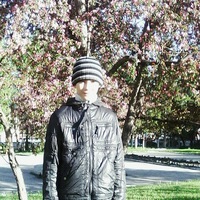
Почему семена культурных растений высаживают в разное время?
 0
0
 0
0
Ответы на вопрос
 Внимание! Ответы на вопросы дают живые люди. Они могут содержать ошибочную информацию, заблуждения, а также ответы могут быть сгенерированы нейросетями. Будьте внимательны. Если вы уверены, что ответ неверный, нажмите кнопку "Пожаловаться" под ответом.
Внимание! Ответы на вопросы дают живые люди. Они могут содержать ошибочную информацию, заблуждения, а также ответы могут быть сгенерированы нейросетями. Будьте внимательны. Если вы уверены, что ответ неверный, нажмите кнопку "Пожаловаться" под ответом.

Ответ:
Потому что у всех растений есть свой срок жизни - срок вегетации. ... Одни растут быстро и умирают быстро (10-30 дней), другие вегетируют долго - 170-200 дней
 0
0
 0
0

Ответ:
их хорактер нестабилен, неприживаются из за разных условий
 0
0
 0
0

Why are seeds of cultivated plants planted at different times?
The timing of planting seeds for cultivated plants can vary for several reasons. Here are some factors that influence the timing of seed planting:
1. Seasonal Variations: Different plants have different growth requirements and are adapted to specific seasons. Planting seeds at the appropriate time ensures that the plants have optimal conditions for growth and development. For example, warm-season crops like tomatoes and peppers are typically planted in the spring when the soil has warmed up, while cool-season crops like lettuce and spinach are planted in the early spring or fall when temperatures are cooler.
2. Frost Sensitivity: Some plants are sensitive to frost and cannot tolerate cold temperatures. These plants are usually planted after the last frost date in a particular region to avoid damage to the seedlings. The last frost date varies depending on the climate and location. Planting seeds too early can expose them to frost, which can hinder their growth or even kill them.
3. Day Length Requirements: Certain plants have specific day length requirements for flowering and fruiting. These plants are categorized as either short-day, long-day, or day-neutral plants. Short-day plants, such as onions, require shorter daylight hours to initiate flowering. Long-day plants, like lettuce, require longer daylight hours. Day-neutral plants, such as tomatoes, are less influenced by day length. Planting seeds at the appropriate time ensures that the plants receive the required day length for optimal growth and development.
4. Crop Rotation: Crop rotation is a common agricultural practice that involves planting different crops in a specific sequence to improve soil health and reduce pest and disease pressure. By rotating crops, farmers can break pest and disease cycles and replenish soil nutrients. The timing of seed planting is crucial in crop rotation to ensure that the previous crop has been harvested and the soil is ready for the next crop.
5. Market Demand: The timing of seed planting can also be influenced by market demand. Farmers may adjust their planting schedules to align with market trends and ensure a steady supply of fresh produce. For example, if there is high demand for a particular crop during a specific season, farmers may plant seeds earlier or later to meet market needs.
In conclusion, the timing of seed planting for cultivated plants depends on various factors such as seasonal variations, frost sensitivity, day length requirements, crop rotation, and market demand. By considering these factors, farmers can optimize plant growth and yield.
 0
0
 0
0
Похожие вопросы
Топ вопросов за вчера в категории Биология
Последние заданные вопросы в категории Биология
-
Математика
-
Литература
-
Алгебра
-
Русский язык
-
Геометрия
-
Английский язык
-
Химия
-
Физика
-
Биология
-
Другие предметы
-
История
-
Обществознание
-
Окружающий мир
-
География
-
Українська мова
-
Информатика
-
Українська література
-
Қазақ тiлi
-
Экономика
-
Музыка
-
Право
-
Беларуская мова
-
Французский язык
-
Немецкий язык
-
МХК
-
ОБЖ
-
Психология
-
Физкультура и спорт
-
Астрономия
-
Кыргыз тили
-
Оʻzbek tili


























